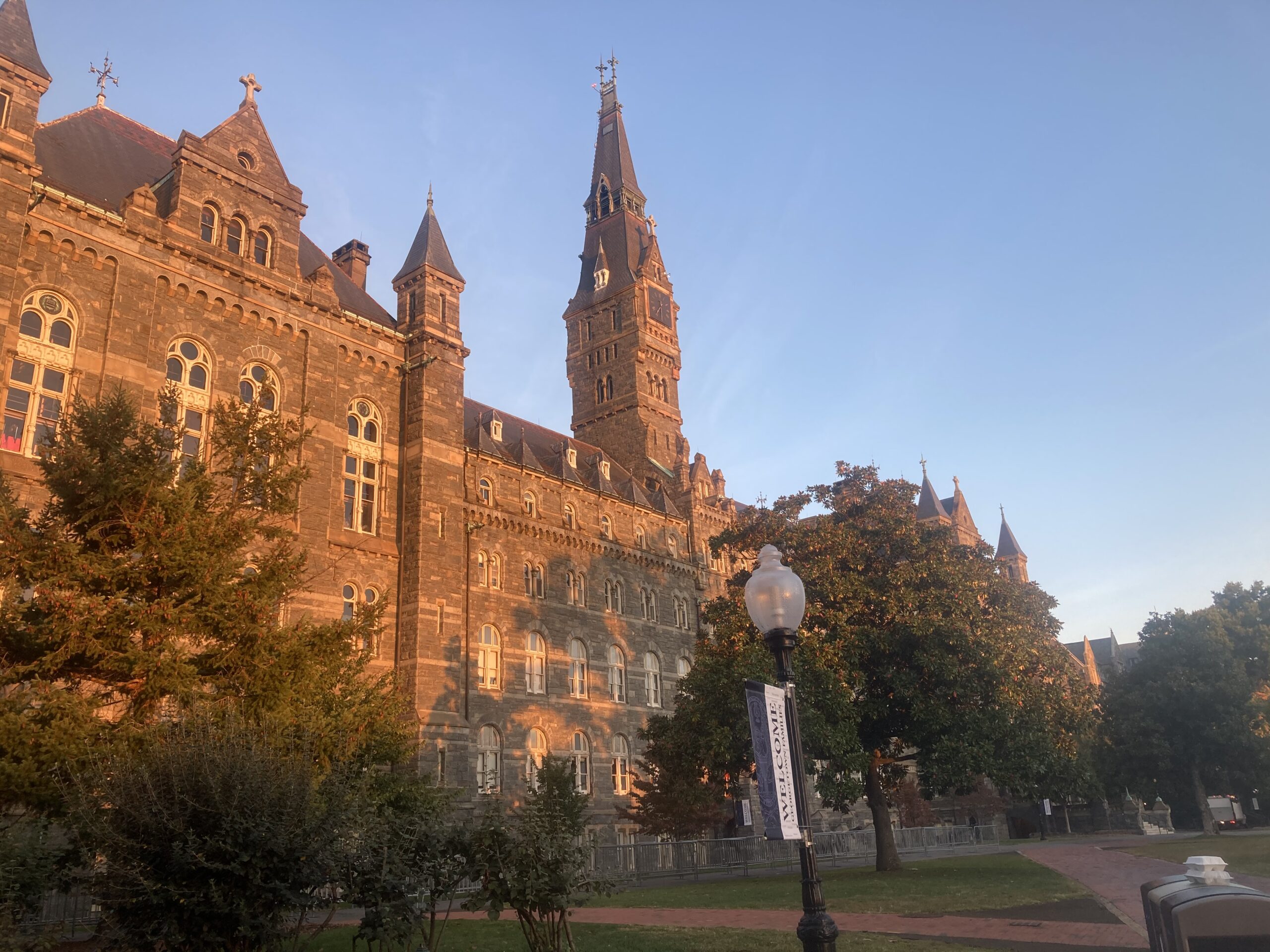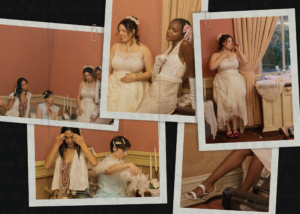Groaning, I rolled out of bed, stumbling towards my phone to silence the song screaming at me as I grabbed my toiletries. Barely opening the heavy bathroom door wide enough for me to pass, I dropped my toiletries onto the soaked counter, and reached for a paper towel, yet the light of the dispenser didn’t flash. I waved my hand in front of the sensor a second time with the same results. Because I forgot my towel and did not feel like making the long twenty-foot walk back to my dorm, I slapped the side of the machine, causing a three foot-long towel to come rolling towards the drenched bathroom floor. Georgetown is Georgetown.
Even though this daily frustration is minor in comparison to the other serious and stressful factors of living at Georgetown, life on the Hilltop is filled with an array of them. Ranging anywhere from mice scurrying across our common rooms to a fire alarm in the middle of the night, these aggravations add on top of an already insane schedule of classes, clubs, and enough time to destress with friends before the cycle continues. Never mind the fact that Georgetown has a history of sweeping things under the rug such as unattended mold in too many dorms to count and the attempted concealment of a hate crime committed against a Black student. At times like these, I get so frustrated that I wish I was anywhere but here.
The constant little—or even big—reminders that Georgetown doesn’t seem to particularly care for its students make it hard to remember the good moments we have experienced here. And, as we have to make this place our home for four years, it’s important to find the parts of the school that keep us going and remind us that we are seen and cared for without the price of our tuition attached.
In my search for Georgetown’s better qualities, I like to remember why I chose to come here in the first place. While I was impressed by the gothic beauty of Healy Hall and the bright colors of the front lawn’s tulips, what I remember most about my first visit to the Hilltop is the people. I remember feeling so in awe of my tour guide, the first woman I had ever met who wore her makeup the way I did, and saw a version of myself I hoped to be in four years. Her openness and honesty with all of my questions filled me with such hope and made Georgetown seem like a place where I could see myself as opposed to an elite establishment that would turn down my application the moment they saw I was from a small, rural public high school.
Quite commonly, when people think of elite universities, they think of a loyal alumni association, hyperintense classes and workloads, and an insane price tag of tuition. While Georgetown does, indeed, have all of these things, that’s not what makes Georgetown Georgetown. They are the societal signals that scream to the rest of the world that we are a highly-priced, rich-historied academy. Façades don’t constitute the identity of a place to the people who live there though, no matter how pretty their president’s office is or how beautiful their magnolia trees blossom come spring.
Any institution can have gothic architecture and broken-down bathrooms, but Georgetown’s atmosphere and ambiance are created by the people sitting in the shade outside of Healy Lawn, by the students trying not to laugh in the middle of Lau Three. Without people, buildings are just buildings, and universities are just places with books and empty desks. Georgetown students are the ones who create the high-intensive learning environments that allow not only their own intelligence to flourish but that of their peers, as well. Though people can simultaneously be smart and unkind human beings, those at Georgetown are not only bright but, more importantly, good people who, in my experience, genuinely care about other Hoyas.
From class acquaintances bringing me lunch when I was sniveling in bed to friends encouraging me to have hard conversations with professors that terrified me, the people I’ve met here have been nothing if not supportive and loving. Never have I felt like we were competing against one another for good grades. Rather, it’s like we’re all on the same team, because we are. When one of us does well, we all celebrate that person’s accomplishments. And when one of us falls, we rally around them and support them until they’re back on their feet again. These last memories reveal the thing that keeps me going, the very essence of Georgetown: its people.
Even though the follies and failures of this institution have caused me to lose my rose-colored glasses when I look at Georgetown, the people always take me back to the adrenaline rush of my acceptance letter. My joy at Georgetown has come from these beautiful souls who have not only commiserated with me through all of this school’s struggles but have also taken a stand against the injustices they refuse to turn a blind eye to. I couldn’t have been more grateful for my community as I watched my dorm mates walk out of Healy Hall after a long day of peaceful protesting. Although I knew that Georgetown was an incredibly politically active and social justice oriented campus before coming here, seeing so many students give up their week to demand accountability from the people in power was both a humbling and empowering experience, reminding me to contribute to the end of systemic racism and privilege in any way I can. My heart swelled with pride, sitting in my Feminist Readers class, discussing with my female peers how we can combat the sexism we each face daily. The Hoyas I’ve crossed paths with have cared deeply and fought bravely for the changes they wished to see in the world. That energy is contagious, encouraging us all, including myself, to be our best selves and to have a positive impact on our community and in our world.
What makes the Hilltop feel like home isn’t the facilities or reputation, but rather the community. For when we think of our homes, we don’t think of all the things we hate about it; we think of the people who love us that make it feel like home. This truth can help us see the joy in Georgetown, pulling our gazes off of the material and visual attributes of Georgetown and focusing on the feeling we get whenever we see our friends across Healy Lawn on a Friday afternoon. When we make people the center of our delight at Georgetown, we gain access to joy even when there’s no paper towels left in the dispenser. Our joy doesn’t come from external systems. It comes from fellow human beings with whom we connect, treasure, and love.





